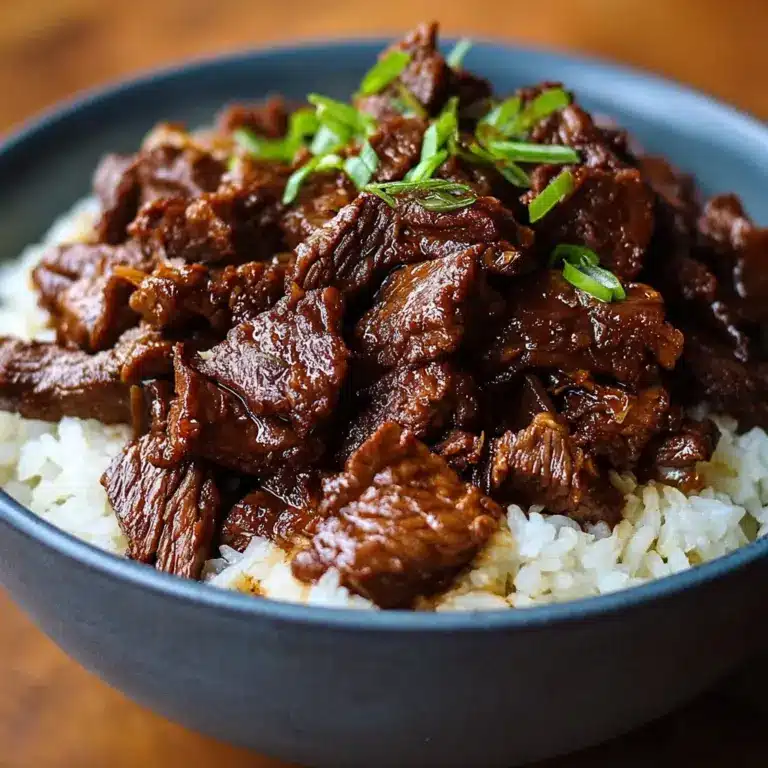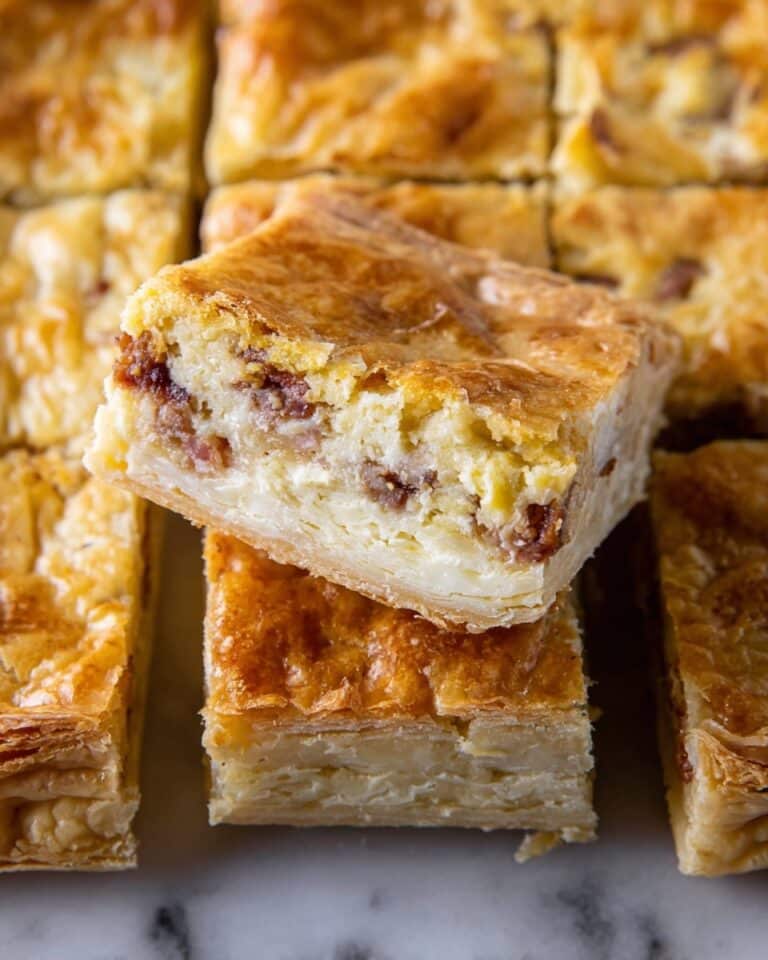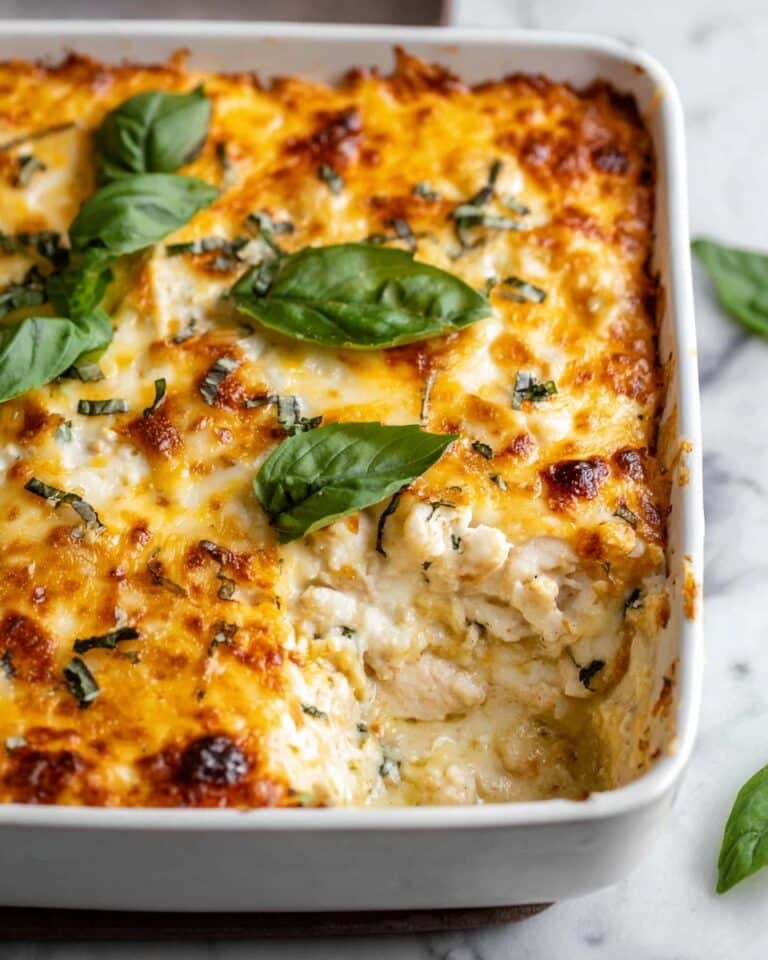How to make Greek pita bread Recipe
“`html
If you’ve ever enjoyed a tender, pillowy pita fresh from a Mediterranean bakery and wondered how to recreate that magic at home, you’re in for a treat. Learning how to make Greek pita bread brings the warm, rustic flavors of Greece right to your kitchen, combining simple ingredients to produce soft, perfectly puffed pockets that are as versatile as they are delicious. From the fragrant thyme-infused dough to the golden crust cooked on a hot skillet, this recipe captures the essence of authentic Greek pita bread and makes it accessible for anyone ready to elevate their homemade bread game.
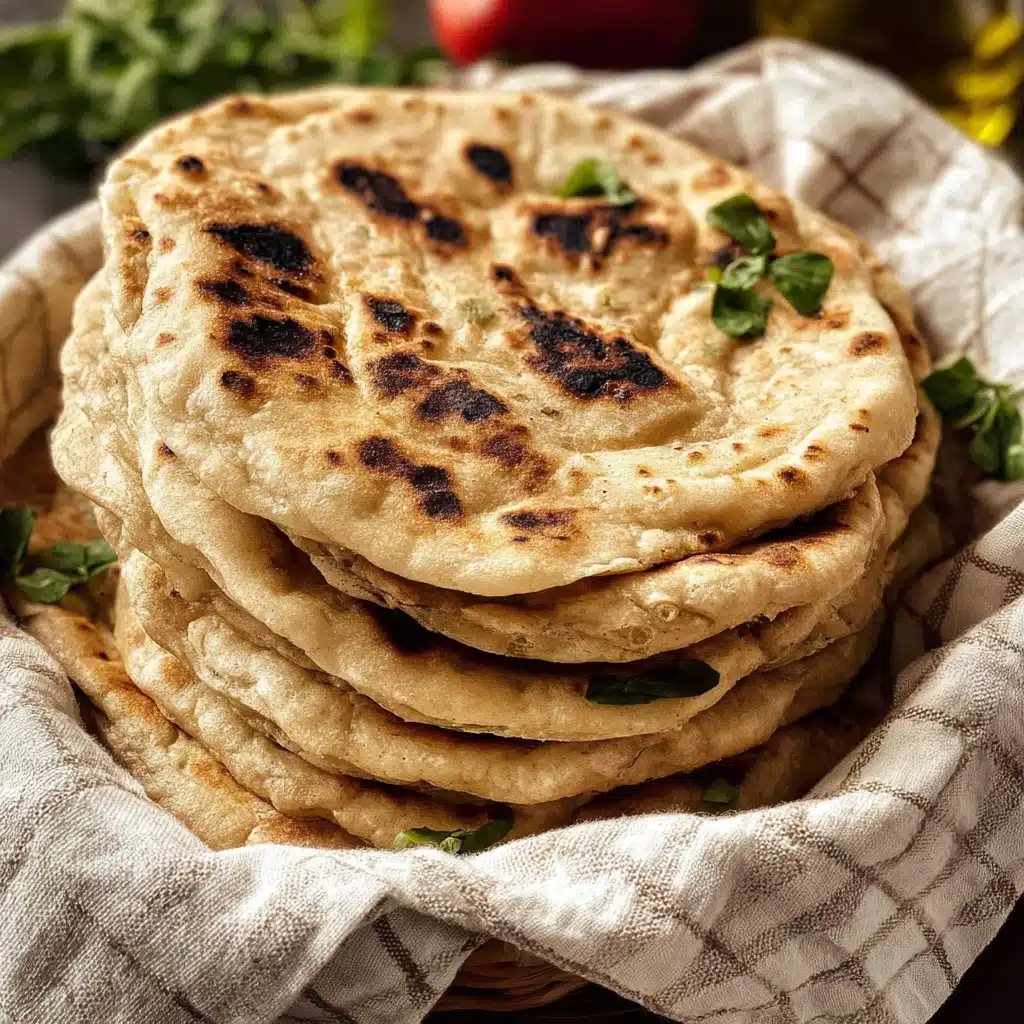
Ingredients You’ll Need
Every great pita bread starts with a handful of straightforward ingredients, each playing a crucial role in crafting the texture, flavor, and aroma that make Greek pita bread so irresistible. With just flour, yeast, and a few pantry staples, you’ll see how easy it is to deliver such a satisfying bread.
- All-purpose flour (2 1/2 cups): The foundational ingredient, providing structure and chewiness to the pita.
- Kosher salt (1 teaspoon): Enhances the overall flavor and balances the dough.
- Fresh thyme leaves (1 teaspoon, finely chopped): Adds a subtle herbaceous note that lifts the bread’s aroma beautifully.
- Active dry yeast (2 teaspoons): The magical agent that makes the pita rise and develop its airy texture.
- Sugar (1 teaspoon): Feeds the yeast, jumpstarting fermentation and helping with browning.
- Water (1/2 cup, room temperature): Hydrates the dough and activates the yeast gently.
- Milk (1/4 cup, room temperature): Provides richness and tenderness to the pita crumb.
- Extra virgin olive oil (2 tablespoons, plus more for cooking): Adds flavor, helps keep the dough soft, and creates a lovely crust.
- All-purpose flour (for dusting): Prevents sticking while you knead and shape the dough.
How to Make How to make Greek pita bread
Step 1: Activate Your Yeast
Begin by combining sugar, active dry yeast, water, and milk in a small bowl. Let this mixture rest for about five minutes until it becomes foamy on the surface. This signals that your yeast is alive and ready to work its magic, setting the foundation for fluffy pita bread.
Step 2: Mix the Dry Ingredients
While the yeast is blooming, whisk together the flour, kosher salt, and finely chopped fresh thyme leaves in a large mixing bowl. The thyme will infuse the dough subtly during the rise and baking process, giving your pita that authentic Greek touch.
Step 3: Combine Wet and Dry Mixtures
Stir the olive oil into the activated yeast mixture, then gradually pour this liquid blend into the bowl with your dry ingredients. Mix gently at first to bring the dough together. This step melds the flavors and hydrates the flour, preparing for kneading.
Step 4: Knead the Dough
Turn the sticky dough out onto a lightly floured surface and knead it for about 4 to 5 minutes. You’re aiming for a smooth, elastic texture—this workout develops the gluten that gives your pita its signature chewiness and light crumb.
Step 5: First Rise
Lightly brush a bowl with olive oil to keep your dough from sticking, then place the ball inside. Cover with a damp towel and set aside in a warm spot for 40 minutes to an hour. You’ll notice the dough grow and double in size—proof that everything is coming together beautifully.
Step 6: Shape Your Pitas
Once doubled, punch down the dough gently to release excess air, then divide it into eight equal pieces. Using your hands, carefully stretch each piece into a circle about 7 to 8 inches wide. No need for a rolling pin here; the gentle stretching keeps the dough light and airy.
Step 7: Cook Your Pitas
Heat a cast iron pan over high heat and add a teaspoon of olive oil. Place the pita circles one at a time into the hot skillet, cooking each for around one minute per side. Watch as they puff up with a few delightful bubbles and develop golden brown spots. After cooking 1 or 2 pitas, feel free to add a bit more olive oil to the pan to keep things perfectly crisp and flavorful.
How to Serve How to make Greek pita bread
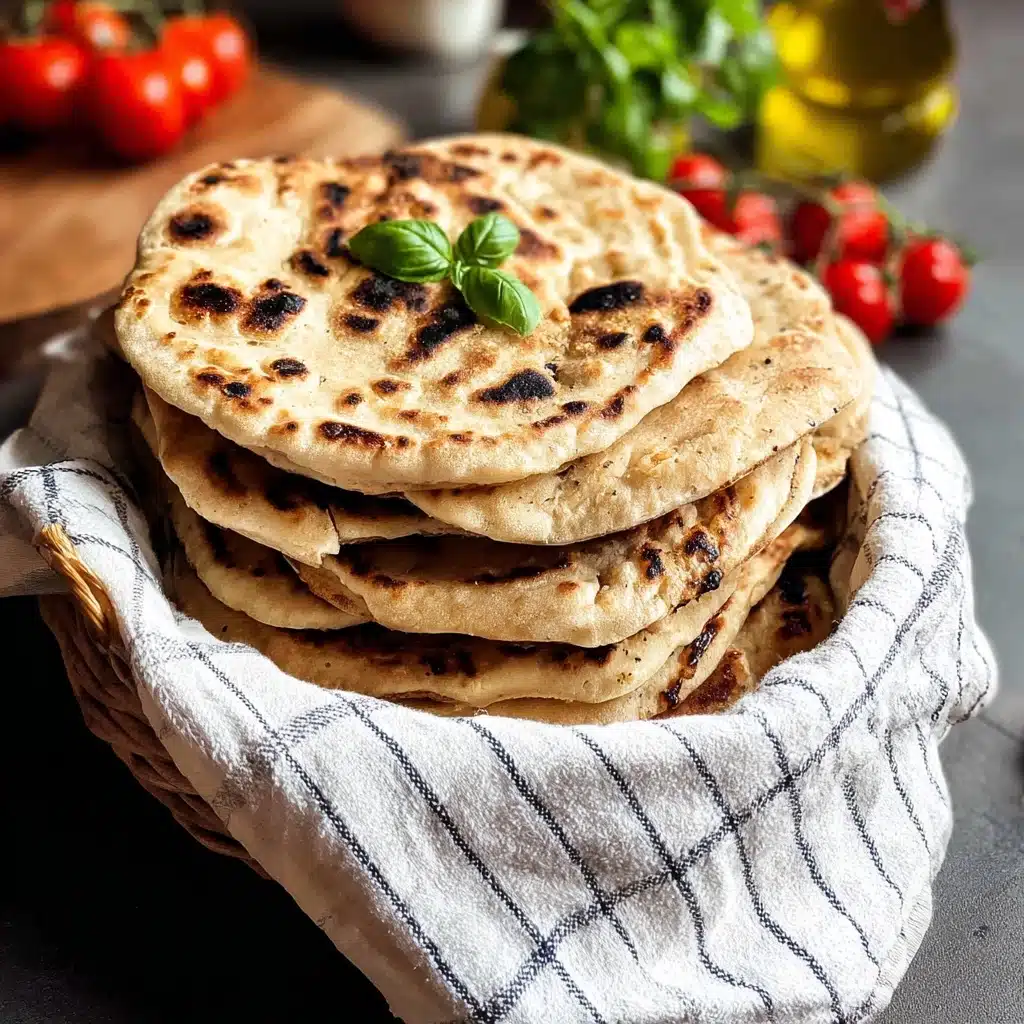
Garnishes
Once your Greek pita bread is cooked, consider brushing them lightly with olive oil and a sprinkle of sea salt for extra shimmer and flavor. Fresh herbs like oregano or thyme can be added as garnishes to echo the fragrant hints baked right into the dough, making every bite spectacular.
Side Dishes
Greek pita bread is the perfect companion to hummus, tzatziki, or baba ganoush. Its soft texture scoops up rich dips effortlessly. It also pairs wonderfully with grilled meats, salads, or fresh Mediterranean vegetables, making it a versatile side or base for many meals.
Creative Ways to Present
Try cutting your pita into strips for dippers at a party or stuff them with gyro meat, fresh veggies, and sauce for handheld delights. You can even toast leftover pita and crumble it over salads for a crunchy topping. The possibilities for enjoying pita bread are endless and always crowd-pleasing.
Make Ahead and Storage
Storing Leftovers
If you have any leftover pita (which might be rare!), store them in an airtight container or a plastic bag at room temperature for up to two days. This keeps them soft and ready to enjoy without losing that fresh-baked appeal.
Freezing
For longer storage, pita bread freezes beautifully. Place cooled pitas in a freezer-safe bag, separating each with parchment or wax paper to prevent sticking. They’ll keep in the freezer for up to three months, so you can enjoy Greek pita bread anytime with minimal effort.
Reheating
To bring frozen or stored pita back to life, wrap them loosely in foil and warm in a 350°F oven for about 10 minutes. Alternatively, a quick toast in a pan or toaster oven revives their softness and gives the crust a lovely crispness, as though freshly made.
FAQs
Can I use whole wheat flour for making Greek pita bread?
Absolutely, you can substitute whole wheat flour for a nuttier flavor and added nutrition. However, it might make the pita slightly denser, so consider using half whole wheat and half all-purpose flour for a balanced texture.
Is fresh thyme necessary in this recipe?
While fresh thyme adds an authentic herbal note, it’s optional. If you don’t have thyme, you can skip it or substitute with dried oregano or rosemary to maintain that Mediterranean flavor profile.
Why does the pita bread puff up when cooking?
The puffing occurs as the moisture inside the dough turns to steam during cooking. This steam creates air pockets that lift the dough, forming the classic pocket that makes pita so wonderful for stuffing or dipping.
Can I bake these pitas in the oven instead of cooking on a skillet?
Yes, although skillet cooking delivers a beautiful char and quick puff, you can bake pitas in a preheated 475°F oven for 3 to 5 minutes on a hot baking stone or tray. Just be sure to watch closely so they puff and brown without drying out.
How long can I keep freshly made pita bread?
Fresh pita bread is best enjoyed within 1 to 2 days of baking when stored at room temperature in an airtight container. For longer storage, freezing is a great option to preserve freshness and flavor.
Final Thoughts
Mastering how to make Greek pita bread is like opening the door to a world of Mediterranean delights. Simple ingredients, a little patience, and this foolproof method come together to create bread that’s soft, flavorful, and irresistibly fresh. Whether you’re pairing it with dips, filling it with your favorite ingredients, or just enjoying the warm bread on its own, this recipe is sure to become a beloved staple in your kitchen. So grab your flour and yeast, and start your pita adventure today!
“`
Print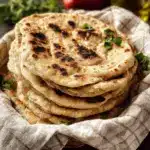
How to make Greek pita bread Recipe
- Total Time: 1 hour 25 minutes
- Yield: 8 pita breads 1x
- Diet: Vegetarian
Description
This Greek pita bread recipe offers a simple and authentic way to make soft, fluffy flatbreads perfect for wraps, dips, and Mediterranean meals. Made with basic ingredients like flour, thyme, and olive oil, it yields warm, flavorful pitas with a perfect puff when cooked on a cast iron pan.
Ingredients
Dough Ingredients
- 2 1/2 cups all purpose flour
- 1 teaspoon kosher salt
- 1 teaspoon fresh thyme leaves, finely chopped
- 2 teaspoons active dry yeast
- 1 teaspoon sugar
- 1/2 cup water, at room temperature
- 1/4 cup milk, at room temperature
- 2 tablespoons extra virgin olive oil
For Cooking and Preparation
- Extra virgin olive oil for the bowl and for cooking
- Additional all purpose flour for dusting the surface
Instructions
- Activate Yeast: Combine the sugar, active dry yeast, water, and milk in a bowl. Set aside for 5 minutes until the mixture becomes foamy, indicating the yeast is active.
- Mix Dry Ingredients: In a large bowl, combine the all purpose flour, kosher salt, and finely chopped fresh thyme leaves evenly.
- Combine Wet and Dry Mixtures: Add the extra virgin olive oil to the yeast mixture and stir well. Gradually pour and mix this yeast mixture into the flour mix to begin forming the dough.
- Knead the Dough: Transfer the dough onto a lightly floured surface and knead vigorously for 4-5 minutes until it becomes smooth and elastic.
- Proof the Dough: Lightly brush a large bowl with olive oil, place the dough inside, and cover with a damp towel. Let it rest for 40 minutes to an hour at room temperature until the dough doubles in size.
- Divide the Dough: Punch down the risen dough and cut it into 8 equal-sized pieces for individual pitas.
- Shape the Pitas: Gently stretch each piece by hand into a flat circle about 7-8 inches in diameter, ensuring an even thickness.
- Preheat Pan: Place a cast iron pan on high heat and add approximately 1 teaspoon of olive oil, swirling to coat the bottom.
- Cook Pita Breads: Cook each pita in the hot pan for about 1 minute per side. The pita should puff up slightly and develop light brown spots. Add more olive oil to the pan after every 1-2 pitas as needed.
- Serve and Enjoy: Once cooked, remove the pitas and serve warm with your favorite dips or fillings.
Notes
- Make sure the water and milk are at room temperature to properly activate the yeast.
- If the dough is too sticky during kneading, sprinkle more flour sparingly to avoid tough pitas.
- You can substitute fresh thyme with dried thyme if fresh is unavailable; use about 1/2 teaspoon dried thyme.
- Resting the dough sufficiently ensures a better rise and softer pita texture.
- Using a cast iron pan ensures even heat distribution and best puffing results.
- Store leftover pita breads in an airtight container and reheat them on a pan or in the oven for best texture.
- Prep Time: 10 minutes
- Cook Time: 15 minutes
- Category: Bread
- Method: Pan-frying
- Cuisine: Greek
Nutrition
- Serving Size: 1 pita bread (approximately 60g)
- Calories: 170 kcal
- Sugar: 1.5 g
- Sodium: 220 mg
- Fat: 5 g
- Saturated Fat: 0.7 g
- Unsaturated Fat: 4 g
- Trans Fat: 0 g
- Carbohydrates: 27 g
- Fiber: 1.5 g
- Protein: 5 g
- Cholesterol: 5 mg
Keywords: Greek pita bread, homemade pita, flatbread recipe, Mediterranean bread, easy pita recipe

